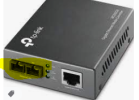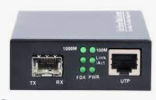Since we can more or less agree that our knowledge is not complete, wouldn't it be stifling scientific curiosity and research if an observable or reported phenomenon (by some) is disbelieved, nay attacked and burnt at the stake on the basis that current scientific knowledge is incapable, inadequate or insufficient to understand it?
I am at least ready to listen to you if you theorize it and prove it within the current scope and understanding of science.
And what does the other side do? Just the opposite! The stand has always been - I hear it, you dont. So whatever you say, or measure is meaningless. And what do you hear? Well you must be born with golden ears to hear what I hear. And what I hear is outside the capability of your measuring instruments. Your instruments are trash and you measuring system is itself flawed. Blind tests are meaningless. Everything other than what I say is meaningless.
What is the value of your observed and reported phenomenon when you cannot help others understand? What is the value when you take a stand that says, I am different and you have to just believe what I say? You have to spend 1000s of dollars on a high end equipment that plays music magically different from others, just because I say so. You dismiss everything else and all supporting evidence as trash. It is always my way or the highway.
The highway it is. At least for a vast majority of us.
Cheers




